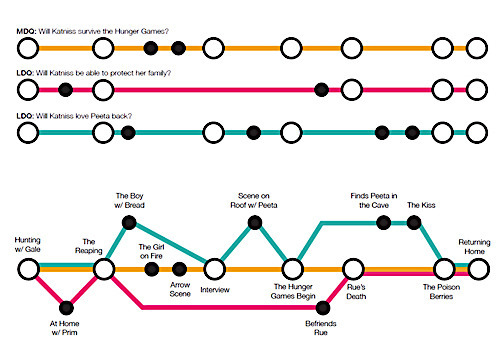Nicky Has A Nightmare He's Back In The Lab With Dr Kodak. Joe Reminds Him That He's Safe.
Nicky has a nightmare he's back in the lab with Dr Kodak. Joe reminds him that he's safe.
Written for the Whumptober 2020 prompt "oxygen mask".
-
 bloodyfeverdreams liked this · 5 years ago
bloodyfeverdreams liked this · 5 years ago -
 whumptober reblogged this · 5 years ago
whumptober reblogged this · 5 years ago -
 saintcobalt liked this · 5 years ago
saintcobalt liked this · 5 years ago -
 caitlyn221b liked this · 5 years ago
caitlyn221b liked this · 5 years ago -
 ti-ixame-ti-xasame liked this · 5 years ago
ti-ixame-ti-xasame liked this · 5 years ago -
 flyingwolf29 reblogged this · 5 years ago
flyingwolf29 reblogged this · 5 years ago -
 flyingwolf29 liked this · 5 years ago
flyingwolf29 liked this · 5 years ago -
 the-most-handsome-ginger liked this · 5 years ago
the-most-handsome-ginger liked this · 5 years ago -
 cinderpelt4ever liked this · 5 years ago
cinderpelt4ever liked this · 5 years ago -
 timefliesinadream liked this · 5 years ago
timefliesinadream liked this · 5 years ago -
 fyeahvulnerablemen reblogged this · 5 years ago
fyeahvulnerablemen reblogged this · 5 years ago
More Posts from Flyingwolf29
Some people hate sand, Din probably hates stormy planets with changing wind directions



space dad in space walmart meme
Archery information for writers that no one asked for but probably some of you need and I like talking about archery, so here it is.
when you put an arrow on the string, the verb is called “nocking” i.e. eyes glued on the target, he nocked the arrow
also the part of the arrow that gets put onto the string is called the nock. depending on the type of arrow this can be a piece of plastic glued into the arrow, or with wood or bamboo arrows it can be carved into the shaft of the arrow itself
you do not close an eye when aiming or shooting; you see better with both eyes open.
everyone has a dominant eye that more naturally your brain focuses with. that determines whether you are right or left handed when shooting, and doesn’t necessarily correlate to whether the person is right or left handed in anything else
so if you’re writing a character who has difficulty seeing out of one eye, take that into account when they are shooting
if they are right eye dominant, they hold the bow with their left hand and draw the string with their right. if they are left eye dominant, they hold the bow with their right hand and draw the string with their left
if they shoot left, the quiver sits on their left side/hip/thigh. shoot right - right side quiver.
there are several different ways to draw, if you are writing something historical or in a specific region, then do research on that style of archery. but for a generic place to start that is a more universal way of drawing a bow, here are some things to include
the chin stays down. raising your chin will fuck up your aim
the pointer finger on your draw hand rests on the side of your chin/jaw, and the string of the bow will touch the tip of the archer’s nose
weight is on the balls of your feet, leaning slightly forward off your heels
if it is an older bow/barebow, there is not usually a place for the arrow to rest on the bow. this means the arrow rests on the archer’s hand. if they are not wearing a glove on that hand, the fletchings (that’s the feathers on the arrow) will more than likely slice their hand when firing. this scars.
so if you’re wanting to describe someone observing and archer’s hands (hands are hot, don’t @ me) they would see a silver scar about halfway between the pointer finger knuckle and palm of the person’s hand. (turn your hand vertical and trace down the length of your pointer toward your thumb and stop next to the knuckle. that spot there.)
most archers wear something to protect their fingers on the hand that draws the bow. even with that, they have callouses. without it, a lot of callouses, scars, and blisters.
most common draw uses three fingers on the string: pointer, middle, ring. the arrow sits between the pointer and middle. just like where the draw point is, this is not universal and do research if you’re doing something culturally important.
barebow means that the bow is bare of any instruments. no sight, no weights, etc. the most basic/traditional form of bow
a recurve bow is anything where the tips of the bow curve back around forward, away from the archer
a compound is what you think of as a modern hunting bow, and is recognisable by having wheels at the ends and three strings
arrows have three fletchings that form a triangle, the point faces the archer so that the flat of the arrow will pass the flat of the bow on release. the arrow sits on the side of the bow facing the archer
archers with a larger/raised chest will sometimes where a chest protect so that the string does not catch when firing (this is regardless of gender, i know several cis-men who need it as well)
string can also catch on the forearm that is holding the bow and creates bruises and welts if you don’t wear a protector. modern ones are small plastic and cover just the spot, with elastic holding it in place. traditional ones are leather and wrap all the way around, lacing up on the back of your arm like a corset.
there is literally so much more, but i feel like this is plenty to get you started, and as always, feel free to drop an ask in my box if you need something more!
I was wondering if you knew any basic guides to outlining a novel for the first time?
Outlining a story is very, very important. Without an outline and thorough planning, your story will veer off in wildly different directions and will cost you a ton of time editing later, like my book did.
1. Get the characters down first
Characters are like the chess pieces of the story. Their moves and strengths/weaknesses will decide what is going to happen and how it will happen. Sure, you can have a nice plot and setting, but without the characters, the story is meaningless.
Here is the character chart that I usually use:
Name (First/Middle/Last/Maiden name)
Aliases/Nicknames
Age
Race
Gender
Sexuality
Height
Weight
Eye color
Hair color
Clothing style
Religion
Political views
Personality Traits
Strengths and Weaknesses
Likes and Dislikes
Family
Friends
Enemies
Role in the story
Backstory/past
2. Choose a template
Just bulleting the events does not give the plot the dimension that it deserves and does not really accommodate side plots.
I personally use the zigzag method that I discovered from this post. I branch off of the zigzags for my side plots so it looks kind of like a graph.

You can also use the subway method, which I found on the nanowrimo website.

There are a whole other host of outlines to choose from if you search them up!
3. Know that you don’t have to stick to it
An outline is just that: an outline. It’s not the final decision for the plot, it’s the first draft for the plot. If you’re writing and one of the points just isn’t working anymore, you don’t have to keep it because it was a part of your outline.
Write what feels right.
Happy outlining, and good luck with your story!

